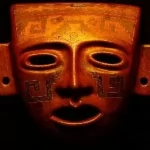Southern California Public Radio: Mex-LA exhibit explores Mexican-American two-way street
Sept. 19, 2011 | Adolfo Guzman-Lopez | KPCC
During the 1930s, two well-known Mexican painters, David Alfaro Siqueiros and Jose Clemente Orozco, created public murals in downtown L.A. and Pomona. Jesse Lerner, curator of “Mex-LA” at the Museum of Latin American Art in Long Beach, says the artists’ work had a ripple effect in the Southland.
“We were interested in using their presence in Southern California as a point of departure in thinking of the impact of Mexican modernism on the art world of Southern California and other exchanges back and forth between the arts communities of Mexico and Southern California,” Lerner said.
Siqueiros hired influential artist Millard Sheets, who later created mosaics for Home Savings and other institutions. Orozco influenced Rico Lebrun, who later worked with Disney artists on the animated feature “Bambi.” “Mex-LA” explores the interactions and influence between artists from Mexico who came to L.A., and American and Mexican-American artists. Lerner says few people have documented the ways those creative people mixed it up. The story of architect Robert Stacy-Judd stands out, he says. Stacy-Judd relocated from England to L.A., where he indulged his fascination for all things related to the ancient Mayan culture.
“He was extremely engrossed. He visited Yucatan several times, he wrote a number of books about his travels there and about his theories about pre-Columbian contact between the Maya and Europe by way of the continent of Atlantis,” he said.
His Mayan-influenced hotel still stands in Monrovia. By most measures, Stacy-Judd was out there. There’s a picture in the exhibit of him dressed in a Mayan-Aztec headdress and tunic, posed as if he’s in the Bangles’ “Walk like an Egyptian” video.
Ancient culture influenced the moderns, and modern art found its way into pop. Exhibit curator Ruben Ortiz Torres chose to display six production drawings from Disney’s 1944 animated film, “The Three Caballeros.”
“Here we have one in which Donald is trying to reach a guitar but the guitar, if you look at the guitar, the guitar has these kind of colorful abstract forms that might refer to a serape, but it also looks pretty modern, it looks modernistic, it looks abstract,” he said.
That’s the point of the exhibit — that the interaction between Mexican, American, and Mexican-American artists resulted in nuanced work light years from the sombreros and Mexican food that many people associate with our southern neighbor’s influence on L.A.
The exhibit includes works by Chicano artists Chaz Bojorquez and Yolanda Lopez, Mexican photographer Graciela Iturbide, and furniture makers Charles and Ray Eames.
Ortiz Torres says several well-known Mexican intellectuals lived and worked in Southern California. He notes that the late Nobel Prize-winning writer Octavio Paz came up with the idea for his groundbreaking book “The Labyrinth of Solitude” when he lived in L.A. a second time. Paz lived in Los Angeles in his youth when his family was escaping the revolution and it has been said that this is the city where he learned how to read and how to write.
Ricardo Flores Magon, a Mexican anarchist writer who fanned the flames of the 1910 Mexican revolution, coined the slogan, “Tierra y Libertad” — “Land and Liberty” — when he lived in L.A.’s Echo Park. Ortiz Torres says these stories have as much to do with art in L.A. as those associated with artists like Ed Ruscha or John Baldessari.
“Dreams are an activity of memory, our unconscious draws from these memories to create these dreams, so I think for Los Angeles to construct its dreams, it has to be aware of its memories and its past and in this case it has to do a lot with Mexico,” he said.
The exhibit “Mex-LA” at the Museum of Latin American Art in Long Beach is part of the Pacific Standard Time series of exhibitions. The goal of that series — coordinated between multiple institutions — is to document and recover Southern California’s art history before it disappears.




